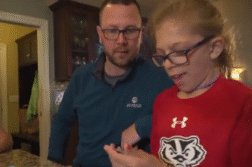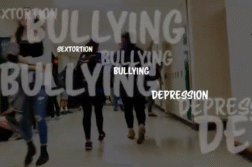Raymund Woo, MD, FAAOS, Medical Director of Pediatric Orthopedics, AdventHealth talks about a new navigation system for pediatric back surgery.
Talk to me about the 7D FLASH navigation system. What exactly is it?
WOO: 7D FLASH navigation is a pretty revolutionary device that helps us perform spinal surgery. The usual way of doing spinal surgery involves some computer-assisted navigation which involves radiation either with x-ray in the operating room or a CT scan in the operating room. And that’s a pretty involved thing. It exposes the patient to radiation. It exposes the staff to radiation. It adds a lot to the complexity of the operation in terms of space and time. And that leads to risks for infection and blood loss, longer recovery, all those things when you add complexity to a surgery. 7D is unique because there’s no radiation at all. It uses the same technology that your cell phone use for facial recognition that unlocks your cell phone. So instead of having the camera unlock the cell phone, you’ve got a camera that looks into the patient’s body through the incision, sees the bones and is able to understand exactly what the skeleton is looking like. It allows you to do the surgery through a purely optical system. There’s no radiation in the operating room. There’s no x-ray in the operating room. This machine is a very small machine. It doesn’t take up a lot of space. It’s actually meant to be used without any help from anybody. The surgeon would use it himself. And it really increases the efficiency in the workflow of the surgery because it makes everything easier.
And so compared to, I guess previous process of doing things, this could only be used by a surgeon. When you were using other systems or other processes, how many people did you need for that whole process?
WOO: That’s a very good question. So, before I used 7D in April I was using a spinal surgery robot. And that required a technician from the company to actually work the robot. That robot had a lot of issues because there’s a lot of moving parts. There was a certain amount of breakage and calibration and certification for that robot. And also, the robot was working autonomously. And it was up to the surgeon to really trust blindly that the robot was accurate. That was one of those big things which really added time and complexity to surgery as well as having physically somebody there to run the machine. And so, prior to that I was using another kind of navigation surgery but that required a CAT scan to be done in the operating room or an x-ray machine in the operating room in order to get the work done. And that added time and complexity and of course the radiation to the kid. Parents are very concerned about radiation to children. I think that is a universal thing. There’s a lot of movement towards reducing radiation in children for anything which is done with x-rays these days because of problems with perhaps growth retardation or reproductive capability. So having something which gets you out of that is a really game-changing idea.
So how much more time does this you?
WOO: This saves me about an hour and a half all in all. It really reduces the time almost back to baseline before I started using any advanced navigation technology. It’s really good. It also has a very fast learning curve which is very unique. Most advanced navigation platforms be it robotic or anything else requires a fair amount of cases for you to be comfortable with that technique and the software and the hardware. We’ve done about 22 cases now in a short span of time. I felt comfortable after about the third case. Previously with the robot, it took me about 50 cases to feel comfortable. So, it’s very easy to do well with this new technology.
So how does this new system change the whole surgery experience for the patient?
WOO: Well, it changes the whole experience for the patient because ultimately they’re in the hospital less. It decreases their stay. It’s all about surgical time and blood loss. Anything that you can do to make the surgery as short as possible with the least blood loss as possible decreases their stay in the hospital, many of the complication rates of bleeding, infection, as well as pain. Now if you have less pain their recovery is faster. You leave hospital sooner. They’re back to normal lives faster. And that’s really how this ends up benefiting not only the surgeon but ultimately the patient at the end.
And I know you touched on it a little bit in the beginning but if you can walk me through exactly how the system works and how you interact with the system during surgery.
WOO: Sure. Sure. So, what happens is that prior to the operation I’m going to plan how I’m going to do the surgery. And the computer system is loaded with a copy of the patient’s spine that we’ve already taken before. And I’ll go through and virtually plan landmarks that the digital software and the cameras are going to recognize in real life. And I expose the spine so that you can see the bones. And the camera in the system is built into a high-intensity OR light. So it’s an OR light which is used in every operating room is just is it has got a laser range-finder that lets you know where to point the light. It’s got two cameras – two stereoscopic cameras which are aligned with the laser. And what you do is you literally press a button and there’s a flash that goes off just like you would for flash photography. These cameras will take a snapshot of the child’s bone. And then after that it’ll tell you what it sees. And then you will go and try to pick three points that you’ve predesignated before the software and the computer will then match what it sees with those points that you’ve pre-marked and is able to now recognize where you’re going. This is all done on a monitor. Now what you do is all your instruments that you use are all now virtually guided – right? – because now the same camera is – now is tracking those instruments. And now it knows where the patient is at. It knows where you’re instruments are at. And now it’s not – you’re just basically doing virtual guidance using the monitor to show you where things are working.
And since the system in itself is not using like with a CT scan are using radiation to get that image, what is it using to get that image?
WOO: So, there’s no radiation in the operating room. Now you still have to do a CAT scan beforehand which is fine. The CAT scans that we do beforehand are unique because they’re low-dose CAT scans. Our hospital was fortunate enough to have developed a technique where you can use a CAT scan machine to get a CAT scan of a child with about an 85% reduction in the amount of normal radiation that you would normally get. So, we use that as the data for which the computer uses for that simulation. Now in the operating room there is no radiation at all and that’s the issue is that the radiation which normally is associated with the surgery, most of the radiation is actually in surgery itself. Most people understand that the radiation that comes from the preoperative CT is a very minimal amount. But it’s really the radiation in surgery which is uncontrollable.
Is this only used for back surgery?
WOO: It’s only used for back surgery. And I believe there is indication now for cranial surgery by neurosurgeons to use. The technology has been around I believe for about two years or three years or so. It’s a Canadian company in Toronto. And they have done a good job of developing this primarily for use in adults for degenerative surgery. In pediatrics and kids, it’s extremely rare. In the United States, there’s only two hospitals which are using this for children. One is in the west coast of California. And we’re the only other hospital in the country who has this for children. That’s it. The only other center which is using this actually is it’s in Toronto in Canada. And that’s it. The applications for adults are very established. It uses the same technology. But doing this in children? It’s a totally different thing.
How recently was it implemented in the use of children?
WOO: Well, it’s been developed, and it’s been worked on since inception. Whether or not it has been popularized, it’s still being developed for that. So, the surgical techniques that you do when you work with children are different than an adult because the matter of the surgery is different. In children you’re dealing with scoliosis which is a curvature of the spine. You’re also dealing with children who’ve got very small bone structure. This is a lot different than an adult who’s having the same kind of surgery for arthritis or for a pinched nerve where the bones are very large, the incisions are very small, and the bones and the spine is very stiff. In a child you’ve got a very flexible spine that’s moving. The child’s got very small bones. And plus, the spine is not straight. It’s twisted. This is why it’s so unique that we’re doing this in kids because we’re really expanding this technology in a direction beyond what it’s been used for in the community.
I was just wondering if it’s still growing now. But do you think since it’s only two hospitals now, do you think at some point it’ll be the standard for all the hospitals around the country?
WOO: I believe there’s going to be a standard that we’re going to be using surgical navigation that minimizes radiation. Currently this is the state of the art. What can evolve into this? It could be augmented reality with goggles. It could be holographic surgery when you’re looking at projected images on top of the patient. All those things will happen without radiation. So yes. It’s going to be state of the art. It’s going to be standard of care in terms of doing surgical navigation with the least amount of radiation possible. This platform is going to evolve. It’s going to get approved. I’m sure it’s going to change and being continuously upgraded into something which is going to be probably dramatically different than what we see now in five years.
Anything I didn’t ask you or you feel that people should know?
WOO: The goal of a pediatric spine surgeon really is to deliver the best care to the child while keeping them safe. That is really the goal of the surgeon is to be sure that surgery is done as safe as possible. That is really the whole goal. How it’s done? That’s a complex problem. This is one part of the equation that achieves the goal of keeping the child safe while you get the surgery done. And this is probably one of most important components of that equation because this directly decreases the amount of blood loss and surgery time for a procedure. So, I think that that’s the most impactful aspect of this technology.
Interview conducted by Ivanhoe Broadcast News.
END OF INTERVIEW
This information is intended for additional research purposes only. It is not to be used as a prescription or advice from Ivanhoe Broadcast News, Inc. or any medical professional interviewed. Ivanhoe Broadcast News, Inc. assumes no responsibility for the depth or accuracy of physician statements. Procedures or medicines apply to different people and medical factors; always consult your physician on medical matters.
If you would like more information, please contact:
DAVID BREEN
Sign up for a free weekly e-mail on Medical Breakthroughs called First to Know by clicking here




